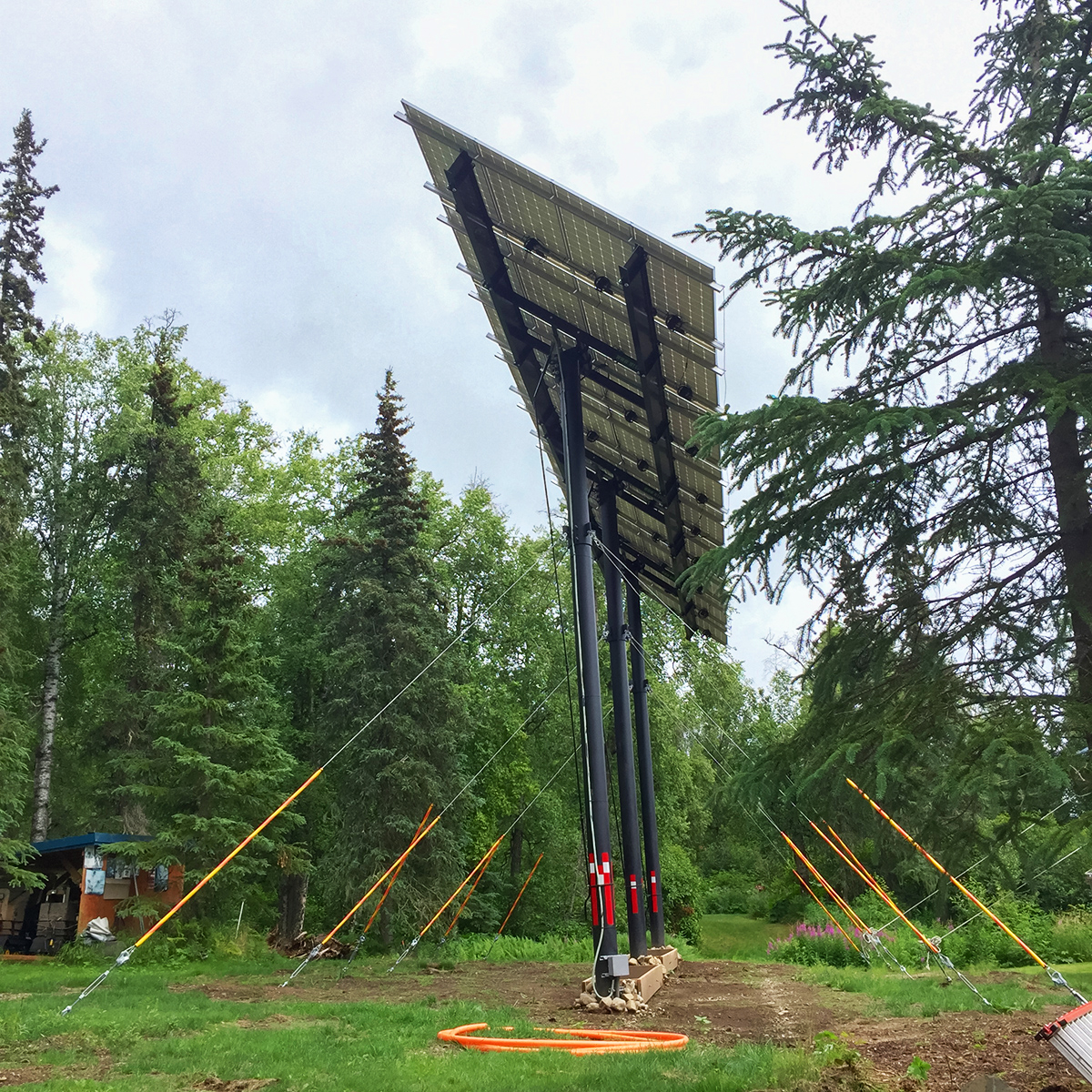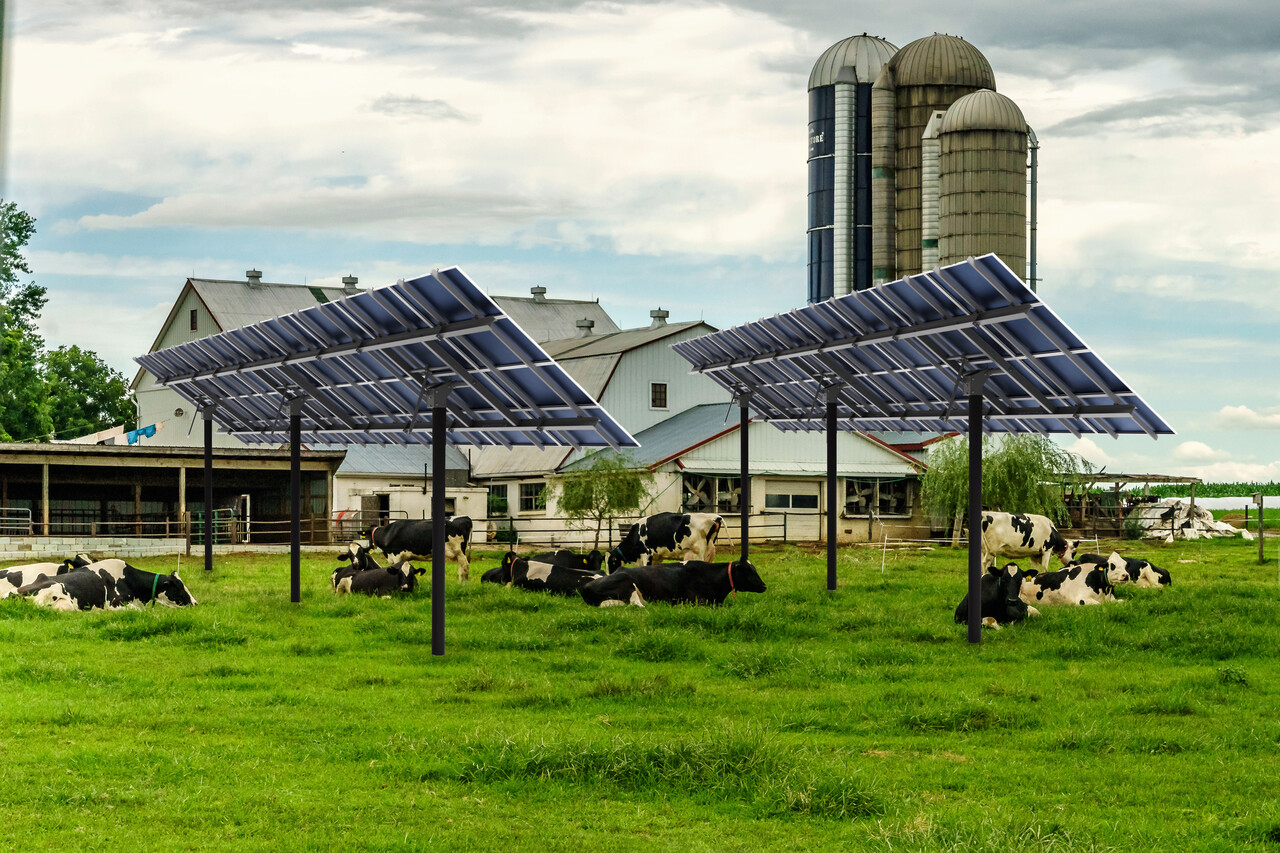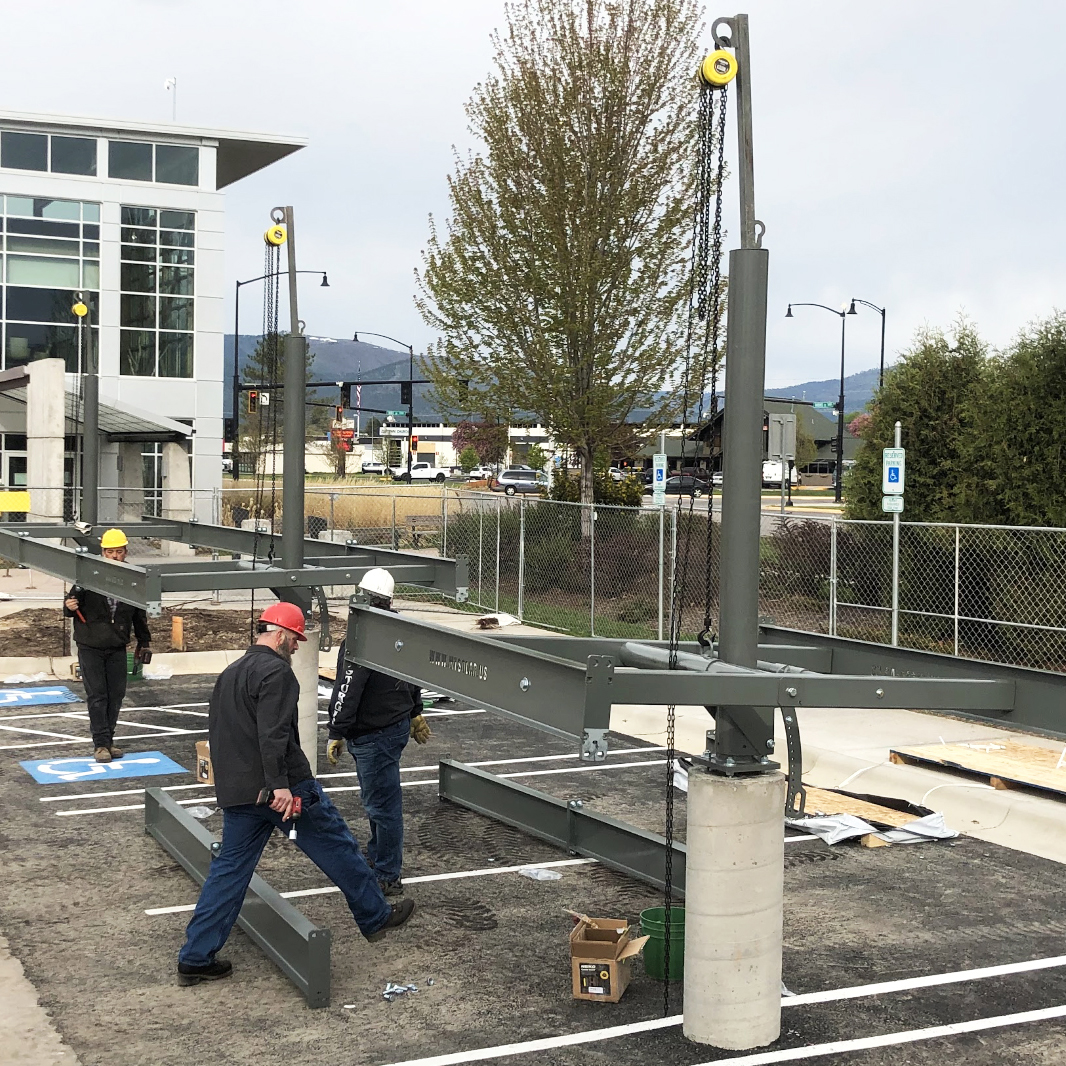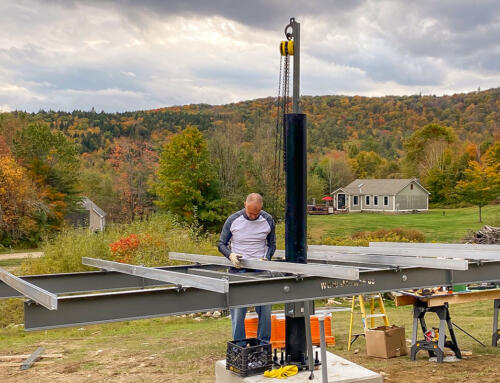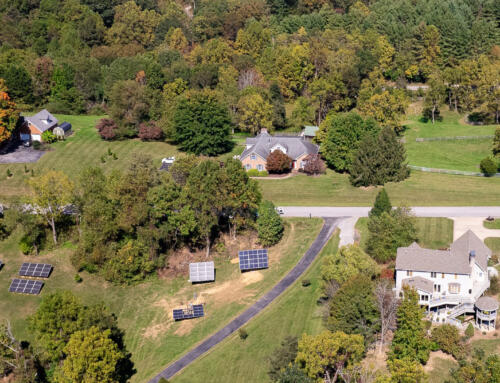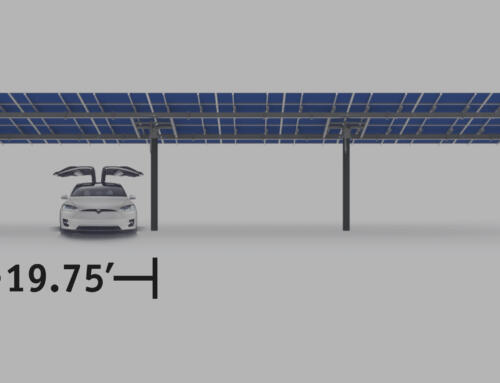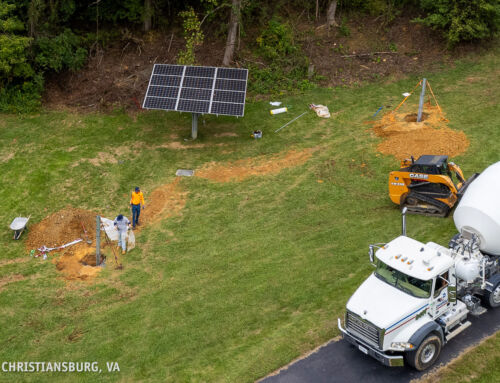As a solar installer, a successful installation for your customer, an efficient array, and safety are probably some of your top priorities.
And while a lot of attention has been given to panel efficiency and smart technology, there’s an often-overlooked factor that can significantly impact the success of your projects: ground clearance.
At MT Solar, we specialize in designing and manufacturing solar pole mount structures. With a focus on making solar installations efficient, fast, and easy in any terrain, we bring a wealth of hands-on experience from projects across the United States.
In this article, we’ll explain why ground clearance is a critical element that can enhance the efficiency, longevity, and overall ROI of your solar installations. By the end of the article, you’ll not only understand the benefits of optimal ground clearance, you’ll be equipped with actionable insights to implement it effectively in your next project.
We’ll be covering:
- The basics of ground clearance
- The benefits of optimal ground clearance
- Technical considerations
- Potential challenges
- Examples of successful installations
The Basics of Ground Clearance in Solar Installation Projects
What is Ground Clearance?
In the context of ground-mounted solar installations, ground clearance refers to the vertical distance between the lowest point of the solar panels and the ground.
Simply put, it’s how high your solar panels are off the ground. This measurement can vary depending on the design of the installation, the type of terrain, and other environmental factors.
Why is Ground Clearance Important?
Environmental Protection: Ground clearance also plays a role in protecting your investment from environmental factors. For example, if you live in an area prone to snowfall, elevated panels will be less likely to get buried under snow, ensuring they can continue to be productive. Similarly, in flood-prone areas, higher ground clearance can prevent water damage to the panels and associated wiring. Increased height also reduces the chances of damage from machinery or debris.
Animal Interference: Wildlife can also pose a threat to ground-mounted solar installations. Elevated panels are less accessible to squirrels, deer, cattle, sheep, and other animals, reducing the risk of damage.
Vandalism: Last but not least, higher ground clearance can also deter vandalism. Panels that are easily accessible can be more prone to tampering or theft. In some locations, solar panels that are not high enough off the ground must be fenced.
The Benefits of Ground Clearance
These include:
- Terrain versatility: One of the most significant advantages of having adequate ground clearance is the ability to install solar panels in difficult terrains. Whether you’re dealing with steep slopes or uneven ground, higher ground clearance allows for a better fit, and ensures that your solar panels are secure.
- Enhanced Production: Higher ground clearance promotes better airflow underneath the solar modules, which in turn increases their production. This is particularly beneficial for bifacial modules, a newer technology that allows sunlight to pass through the panels. The reflection from the ground can bounce back, providing double the production.
- Multi-Functional Space: With higher ground clearance, the space below the solar panels can be utilized for various purposes. From picnics to parking, the options are endless. For those in agriculture, this dual-use system allows cattle to graze below the panels or even use the area as a shade structure.
- Environmental and Wildlife Protection: Finally, higher ground clearance offers protection from environmental factors and wildlife, ensuring the longevity of your system. Because there is no need to sterilize the ground beneath the array, you eliminate the use of harsh, harmful chemicals and protect the ground beneath your array.
How Ground Clearance Affects Efficiency
- Reduced Shading Issues: Higher ground clearance can help overcome shading issues from large trees or buildings. By elevating the panels, you can minimize these obstacles, ensuring maximum sunlight exposure for your solar array.
- Cooler Operation: As mentioned above, better airflow underneath the panels keeps them cooler, which is crucial for optimal production. Overheating can significantly reduce the efficiency of solar panels, so it’s important to keep them cool.
Advantages in Maintenance
- Easy Accessibility: Higher ground clearance allows for easier maintenance from below. There is no need to climb on a roof or under a spiderweb of poles; with our mounts, the panels are easily accessible.
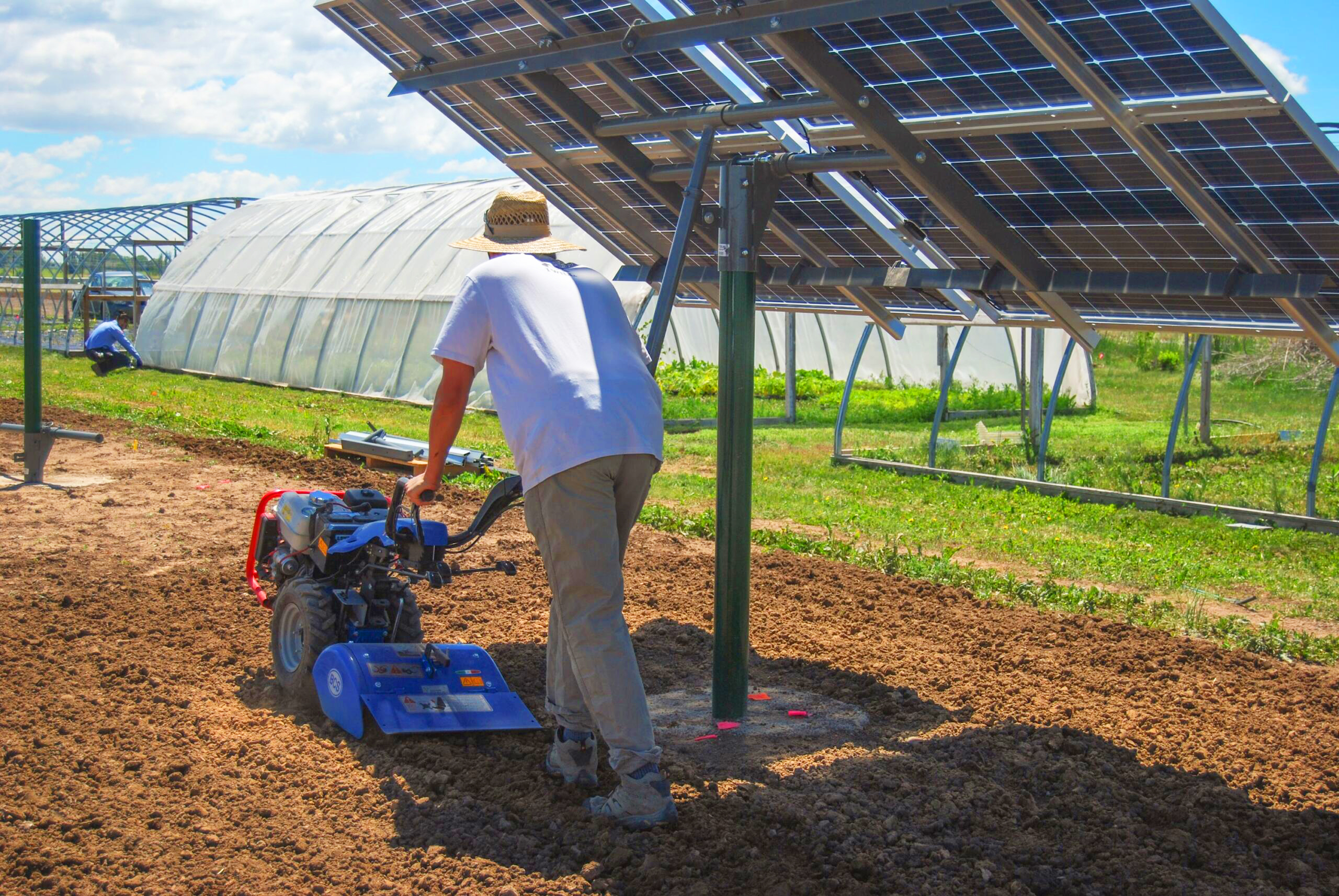
Free space beneath the solar array allows for planting and machinery.
- Ground Maintenance: The space below the panels is also easier to maintain. Whether it’s mowing the grass or other landscaping tasks, higher clearance eliminates the need to duck and dodge around the installation.
Environmental Benefits
- No Need for Harmful Chemicals: Higher ground clearance eliminates the need to sterilize the ground below the panels with toxic chemicals to prevent vegetation from growing through the modules. This is not only good for the environment but also allows you to maintain the natural surroundings.
- Prevents Damage from Overgr
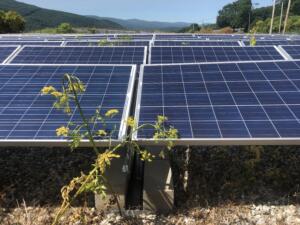
Low clearance creates maintenance issues.
owth: Our team has seen instances where low ground clearance led to weeds and grass growing into the modules, causing both shading issues and physical damage. Higher clearance negates such problems, ensuring your investment stays safe and efficient.
Technical Considerations for Ground Clearance
When it comes to terrain, it all depends on the site. For ground clearance, there’s no one-size-fits-all approach. Every site is unique, and the recommended ground clearance varies depending on several factors, such as terrain type, environmental conditions, and local regulations.
For example:
- Heavily Wooded Areas: You’ll either need to clear out trees or elevate the panels to avoid shading issues.
- Steep Slopes: Higher ground clearance ensures that the back end of the array doesn’t hit the ground.
- Flood-Prone Areas: You’ll want to know the potential water levels and ensure your panels are well above that mark.
How MT Solar Ensures Optimal Ground Clearance
- Education is Key: One of the things that sets us apart here at MT Solar is our commitment to educating our customers. We don’t just sell you a product; we guide you through the entire process. Whether you’re in Alaska dealing with heavy snow loads or just prefer to have shade near your home, we’ll discuss your site conditions and recommend the best ground clearance for optimal production and longevity.
- Flexibility in Design: Our pole mount system offers incredible flexibility, allowing for adjustable tilts. This is a significant advantage over fixed-tilt or tracker systems, which don’t offer the same level of customization. Because of this, we engage in more consultative conversations with our customers to ensure they get the most out of their installation.
Planning for Environmental Factors
When it comes to snow loads or wind susceptibility, we’ve got you covered. MT Solar pole mounts have the ability to shed the snow, provide optimal production in the winter, and have the ground clearance to clear the snow, providing a 1-2-3 power punch.
Ongoing Support
Our customer support team has years of experience and is always ready to assist with any questions or challenges you may have.
Potential Ground Clearance Challenges
- Homeowners Associations (HJs): One of the most common challenges customers face is restrictions imposed by Homeowners Associations. These organizations often have limitations on how high structures can be, which can be a barrier to achieving optimal ground clearance for your solar panels.
- Limited Space: Another challenge is limited space due to factors like low-hanging eaves of houses or high fences. These obstacles can make it difficult to find enough room for a solar installation with adequate ground clearance.
- Difficult Terrain: Steep slopes, flood-prone areas, and other challenging terrains can also pose problems. Installing solar panels in such conditions often requires specialized equipment like ladders, scaffolding, or cranes, which can be both cumbersome and risky.
How MT Solar Addresses These Challenges
- Adjustable Tilt System: Our patented adjustable tilt system offers a flexible solution to many of these challenges. By adjusting the tilt, we can often work around limitations imposed by Homeowners Associations or spatial constraints. This system allows you to “shimmy” the solar installation into tight spaces, providing a practical solution when other options are limited.
- Patented Hoist System: For installations in difficult terrains, our patented hoist system can be extremely useful. This feature allows for the assembly of the solar panels on the ground, eliminating the need for ladders, scaffolding, or cranes. This not only makes the installation process safer but also more efficient.
- Safety First: Safety is a top priority at MT Solar. Our hoisting system ensures that installers have their “boots on the ground” during the entire installation process, significantly reducing the risk of accidents like falls from ladders.
- Consultative Approach: Sometimes, the challenges posed by ground clearance can impact the efficiency of your solar production. In such cases, we take a consultative approach to find the best possible solution. If your local Homeowners Association restricts roof installations and you still want to go solar, we’ll work with you to figure out the best way to make it happen.
Case Studies
Upstate New York: Conquering Steep Slopes
In Upstate New York, we installed a solar array on a steep hillside. The adjustable tilt system and our patented hoisting technology allowed us to elevate the panels high enough to clear the steep terrain. The result? A safe and efficient installation that maximizes solar production.
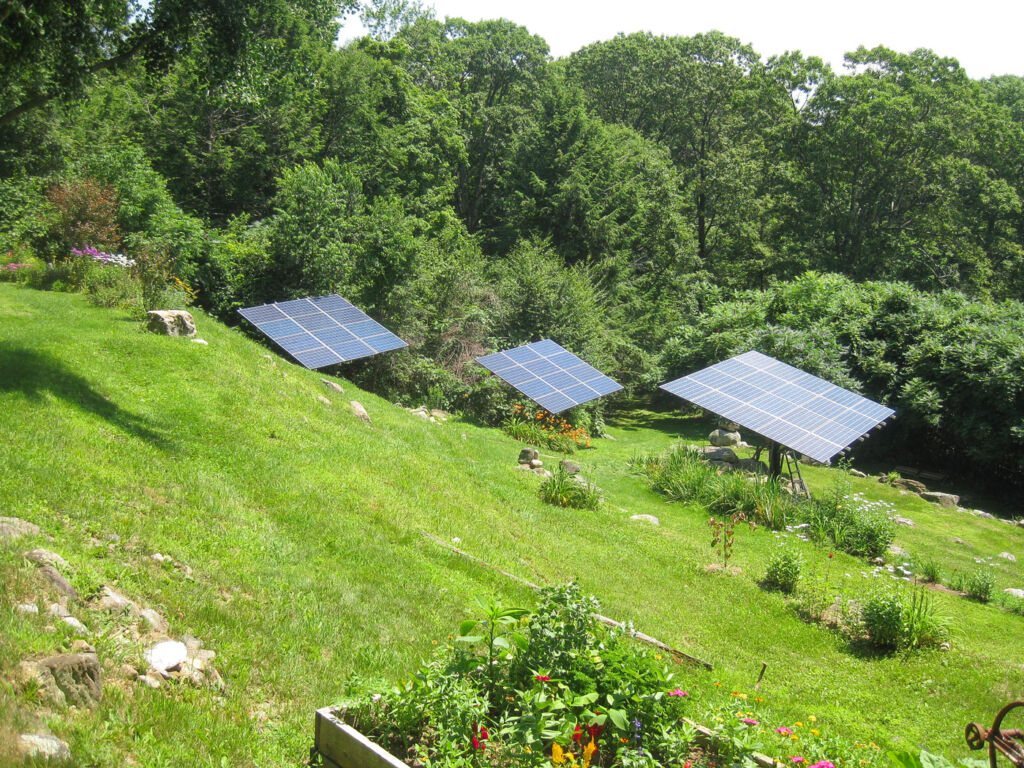
Washington DC: Agrivoltaics in Action
In the nation’s capital, pole mounts are used for an agrivoltaics project that perfectly demonstrates the benefits of ground clearance. The elevated solar panels provided ample room for crops to grow.
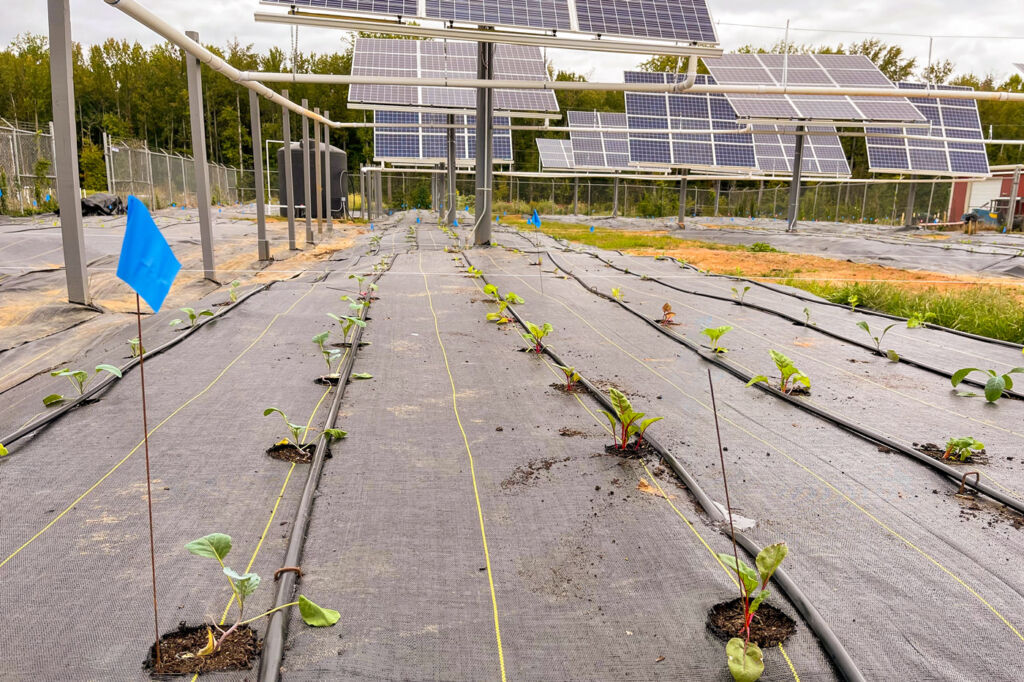
California: Shading Over Pool Decks
In sunny California, we installed a solar array that not only generates electricity but also provides shade over a beautiful patio and pool area. The elevated panels ensure that people can walk underneath without bumping their heads, turning the solar installation into a functional piece of backyard architecture.
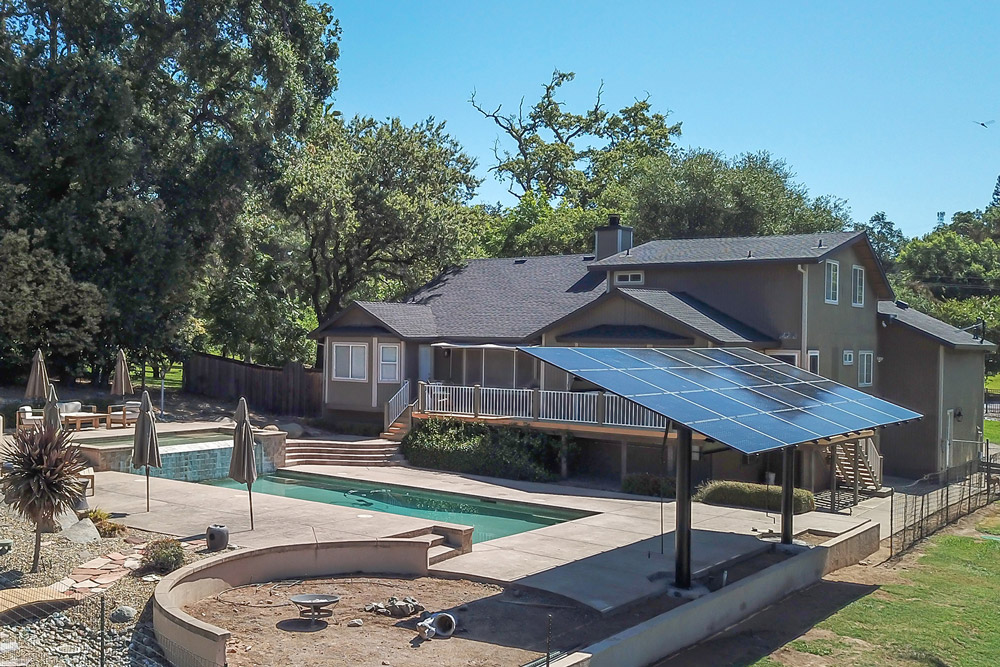
Research and Data: The Science Behind Ground Clearance
University of Illinois Agrivoltaics Study
We’re currently collaborating with the University of Illinois on an exciting agrivoltaics study. The research aims to understand the effects of solar panel shading on water evaporation rates in different crops. Although it’s still in the early stages, we’re eagerly awaiting the results, which could provide valuable insights into the environmental benefits of ground clearance.
The study also explores how elevated solar panels can facilitate the use of large commercial-sized tractors in the fields. This creates a mutual benefit where crops receive some shade, reducing water evaporation, while still allowing for efficient agricultural practices.

